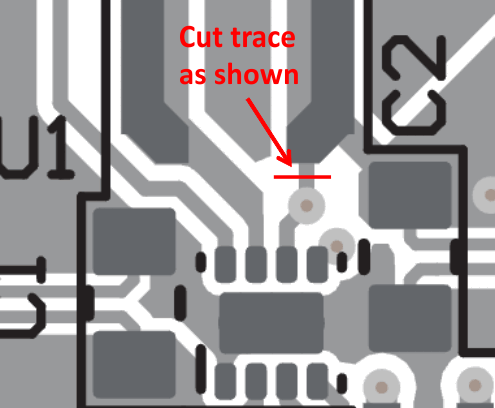SLVU659C March 2012 – June 2021 TPS62125
1.3.3 Loop Response Measurement
The loop response of the EVM can be measured with two simple changes to the circuitry. First, cut the trace between the VOS pin and the inductor on the top layer. This change is shown in Figure 1-1. Second, install a 10-Ω resistor across the resistor pads on the back of the PCB at R7. The pads are spaced to allow installation of an 0603-sized resistor. With these changes, an ac signal (10-mV, peak-to-peak amplitude recommended) can be injected into the control loop across the added resistor. Details of measuring the control loop of DCS-Control devices are found in How to Measure the Control Loop of DCS-Control™ Devices. Figure 3-1 shows the results of this test.
 Figure 1-1 Loop Response Measurement Modification
Figure 1-1 Loop Response Measurement Modification